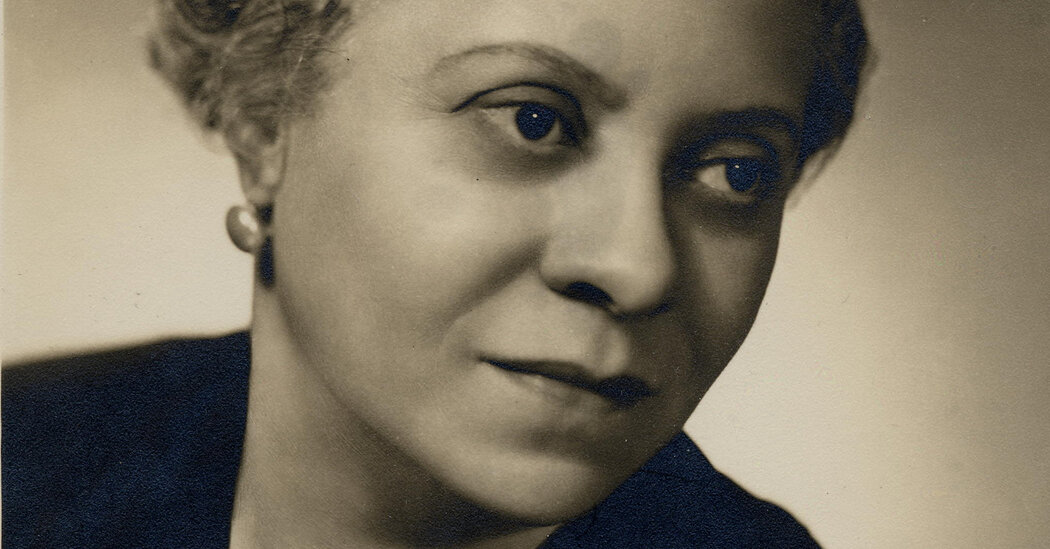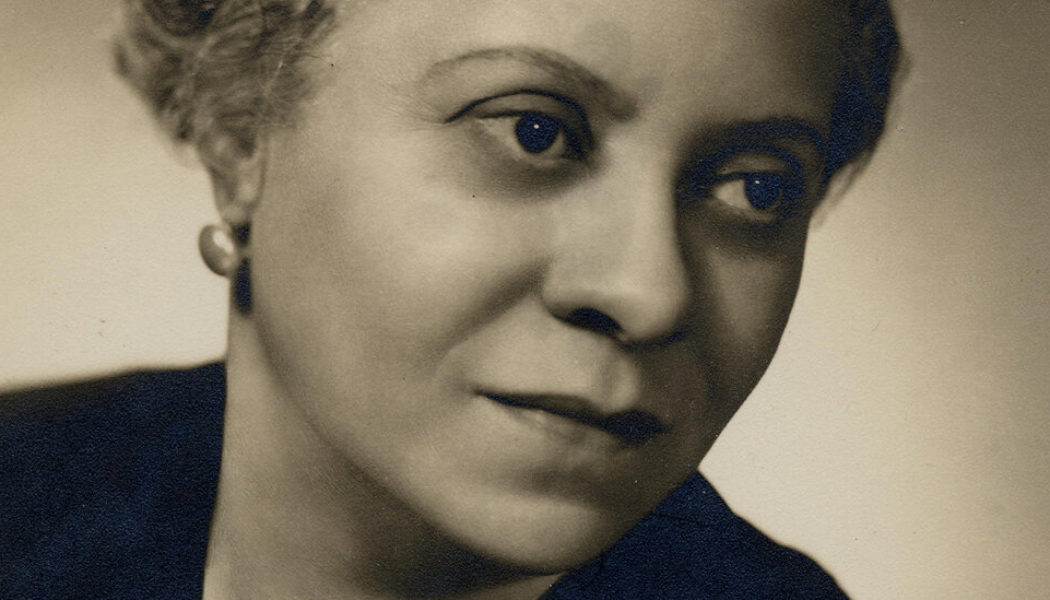
The work of Florence B. Price is having a renaissance, and new, foundational details about her life and racial identity are still being discovered.
By any measure, a Florence B. Price renaissance is well underway.
Seven decades since her death, and nine since the groundbreaking premiere of her Symphony in E minor, her luminous music is enrapturing audiences worldwide. Most recently, the London-based Chineke! Orchestra highlighted that symphony on its debut North American tour, which has included stops at Lincoln Center and Jordan Hall in Boston, where Price herself performed as a New England Conservatory pupil. She has amassed a recorded catalog that includes recent Grammy Award-winning albums by the Philadelphia Orchestra and the New York Youth Symphony.
This excitement stems from a half-century of scholarly and artistic work built on foundations laid by the late musicologists Barbara Garvey Jackson and Rae Linda Brown. A fluke discovery of dozens of Price’s unpublished scores at her abandoned Illinois summer home in 2009, which was then publicized in 2018, added significant momentum that has grown unabated since.
While the explosion of attention is welcome, it has far outpaced a careful assessment of the historical record that may reshape how we view Price and her world. Brown, the leading authority on Price, died in 2017, before she could fully integrate the new discoveries into her magisterial biography that was published in 2020. But, knowing that there was still a great deal more to uncover, she remarked in a 2015 speech, “It is for the next generation of music scholars to tell the rest of the story.”
As we take up the task of writing a new Price biography that draws on materials that were once lost, we have responded to Brown’s invitation by starting at the beginning. Here are just a few of the revelations that have led us to rethink what we know of Price, her music and the world she inhabited.
To start, April 9 happens to be Price’s 135th birthday — again. The current scholarly consensus holds that she was born in Little Rock, Ark., in 1887. We believe that a preponderance of evidence, corroborated by a recently uncovered government document housed in the Library of Congress, now points to her true birth year as 1888.
This small change would be a significant inconvenience for those invested in complete biographical accuracy, such as library cataloging teams. Yet such an otherwise slight discrepancy articulates the broader reality that basic facts about Price remain vexingly difficult to grasp and have emerged only through painstaking analysis of scattered and often disorganized records. Four decades ago, the historian Deborah Gray White described this dimension of Black women’s historiography as “mining the forgotten.”
Through our meticulous research, we have also created a new sketch of the winding and at times traumatic multigenerational experience of racial ambiguity for Price and her family.
Newly available photographs whose labels include Price’s maternal grandmother, Mary McCoy, and great-grandmother, Margaret Collins, appear to confirm that they would have been perceived as white according to post-bellum racial thought. Although no photograph of Price’s maternal grandfather, an Indianapolis barber named William Gulliver, is known to survive, local newspapers described him as “colored.” Curiously, the 1860 census lists the entire Gulliver family as “mulatto,” while the 1870 census lists them as “white.”
That year, Gulliver sued Indianapolis City Schools for rejecting his daughter, Florence Irene (Price’s mother), from the white high school on racial grounds. Rather than seeking racially equitable admission, he argued that she was white by virtue of mixed European, African and Cherokee ancestry. The court disagreed, and a photograph from the time suggests that her racially ambiguous appearance placed her in the fissures of a hardening color line.
In 1876, Florence Irene married a prominent dentist named James H. Smith and moved with him to Little Rock, where they both lived openly as members of the city’s Black elite. Despite their racial ambiguity, the Smiths clearly aligned themselves with Black political causes and at times continued to use the courts to resist tightening Jim Crow constructions of race, largely without success.
After Dr. Smith died in 1910, however, Florence Irene deserted the family altogether to pass as white, entering what the historian Allyson Hobbs has called “a chosen exile.” The musicologist Michael Cooper has recently uncovered that she likely passed as white until she died in 1948, only five years before her daughter’s own death.
One of Florence B. Price’s two daughters, Florence Louise, openly resented that sense of abandonment, passed down in family lore. Florence Irene “wasn’t the one who shouldn’t have married my grandfather,” she once wrote, “just the opposite.” No evidence currently suggests any reconnection between Florence Irene and the rest of the Price family.
Price herself was well aware of racial interstices. In her final year of conservatory study in Boston, she falsely registered as a Mexican resident to avoid harassment from vocally segregationist, Southern white students — a longstanding problem for students of color.
Much later in her career, on July 5, 1943, race, gender and American identity all ran through Price’s mind. In a now-famous letter to Serge Koussevitzky — her second to the influential Boston Symphony Orchestra conductor — she closed with a contemplative assertion, “I have an unwavering and compelling faith that a national music very beautiful and very American can come from the melting pot just as the nation itself has done.” And, repeating a hitherto unanswered call, “Will you examine one of my scores?”
Earlier in the letter, she had written of the “two handicaps of sex and race,” the “Negro blood in my veins,” and how her Arkansas upbringing had shaped her understanding of African American folk music. Knowing of Koussevitzky’s keenness to champion American composers in wartime, Price then introduced the melting pot, not as an idealistic metaphor, but as her reality. He declined to program any of her music.
Here and elsewhere, Price’s vocabulary paints a distinct self-understanding. In a document in Price’s handwriting, likely dating from 1939, she describes her maternal ancestry as “French, Indian and Spanish,” obscuring William Gulliver’s African descent. In contrast, she labeled her paternal ancestry as “Negro, Indian and English.” From this perspective, to tell Koussevitzky that she had “some Negro blood” was a sensible turn of phrase embracing an unclassifiable racial identity.
In our reading, Price’s description punctured “one-drop” ideologies while affirming the creolization of her background. She wanted to complicate rigid conceptions of race, following the stance that her family had clearly taken for generations. As Hobbs has argued, the mutability of racial self-identification open to racially ambiguous people “reveals the bankruptcy of the race idea” while “offering a searing critique of racism” and “disarming racialized thinking.”
And so, as we work to construct Price’s genealogical portrait and her recognition as the first African American woman composer of her stature, we consider how the dynamics of racial passing, ambiguity, colorism and — most important — her self-definition, factored into the path she charted as a creative artist.
Notably, Price explained her musical style to Koussevitzky in terms of ambiguity and fusion. “Having been born in the South and having spent most of my childhood there,” she told him, “I believe I can truthfully say that I understand the real Negro music. In some of my work I make use of this idiom undiluted. Again, at other times it merely flavors my themes. And at still other times thoughts come in the garb of my mixed racial background.”
Price’s capacious sense of self generated an equally capacious horizon of expression captured most clearly in her series of four solo piano works called “Fantasie Nègre.” From the first in the set, which draws upon the spiritual “Sinner, Please Don’t Let This Harvest Pass,” to the last, which weaves an original theme into rhapsodic declamations, each uses different strategies for sounding the folkloric and the fantastical of Black pasts, presents and futures.
Price’s engagement with Black folk idioms in her symphonies and chamber music has also entered the spotlight as listeners have encountered these works for the first time. Often extracted for family performances, her dance-inspired “Juba” movements are especially popular. But limiting engagement to Price’s folkloric music is a mistake. As the composer George E. Lewis has argued, expanding conceptions of the possibilities in Black music must accompany an expanding understanding of Black life.
A prolific song composer, Price was deeply inspired by the outstanding Black poets of her era, including Paul Laurence Dunbar, Langston Hughes, Georgia Douglas Johnson and Joseph Seamon Cotter Jr. She even set some of her own poetry. She was a voracious and eclectic reader who could bring extraordinary musical dynamism to texts across styles and themes. Her setting of “Debts,” by Jessie Belle Rittenhouse, is a profound meditation on the inward experience of love, while “Tobacco,” her setting of a comic poem by Graham Lee Hemminger, shows off her dry wit.
Price’s approaches to the piano and organ, her principal instruments, were equally voluminous. Large-scale works like her Piano Concerto and organ suite display her virtuosic skills as a performer. Her picturesque character pieces — such as “Flame,” “Clouds” and “In Quiet Mood” — reveal a supreme colorist with an imaginative harmonic vocabulary and firm narrative sense.
While recordings of these pieces display the breadth of Price’s creativity, many of her compositional ambitions went unfulfilled at the time of her death, in 1953. Drafts of two symphonies (one of which formed the basis of her tone poem “The Oak”), two piano concertos and a handful of chamber pieces are incomplete, while other major scores for chorus, piano and solo voice remain unpublished. Even so, as Price’s life and works come into sharper focus, the world will continue to find that her music cannot be contained.









